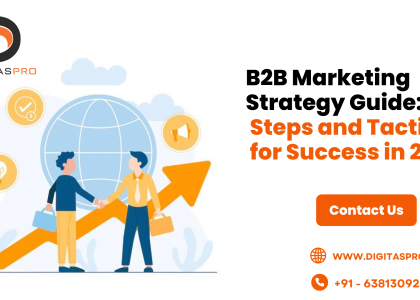


Customer acquisition for a B2B SaaS (Software as a Service) company involves targeting and acquiring businesses as customers for their software solutions. Here are some general strategies and steps for B2B SaaS customer acquisition:
Define Your Target Audience: Identify your ideal customer profile (ICP). This includes characteristics like company size, industry, location, and specific pain points your SaaS solution can address.
Content Marketing: Create valuable content that addresses the pain points and challenges of your target audience. This can include blog posts, whitepapers, webinars, and case studies.
Inbound Marketing: Optimize your website for search engines (SEO) and use lead generation forms to capture contact information from potential customers who visit your site.
Outbound Marketing: Utilize email marketing and outreach to connect with potential customers. Personalize your outreach to show how your SaaS solution can solve their problems.
Social Media Marketing: Use social media platforms where your target audience hangs out. Share content, engage in discussions, and run targeted ads.
Referral Programs: Encourage your existing customers to refer other businesses to your SaaS solution. Offer incentives for successful referrals.
Networking: Attend industry events and conferences to connect with potential customers and partners. Consider hosting webinars or workshops to showcase your expertise.
Partnerships: Establish partnerships with other businesses that complement your SaaS offering. This can help you tap into their customer base.
Demo and Free Trials: Offer free trials or product demonstrations to allow potential customers to experience your SaaS solution firsthand.
Customer Support: Provide exceptional customer support to your existing customers. Happy customers are more likely to refer others and renew their subscriptions.
DigitasPro Technologies is a fictional B2B SaaS company that provides a project management software solution tailored for marketing agencies. Here’s how they might approach customer acquisition:
Identify Target Audience: DigitasPro defines its target audience as marketing agencies with 20 or more employees, particularly those struggling with project management and client collaboration.
Content Marketing: They create blog posts and webinars about the challenges of managing multiple client projects. Topics include “Effective Project Management for Marketing Agencies” and “Streamlining Client Communication.”
Inbound Marketing: The company optimizes its website for keywords related to marketing agency project management. They use lead generation forms to capture contact information from interested visitors.
Outbound Marketing: DigitasPro sends personalized emails to marketing agency executives, highlighting their software’s benefits in streamlining project workflows.
Social Media Marketing: They maintain an active presence on LinkedIn, sharing success stories and case studies from marketing agencies that have benefited from their solution.
Referral Programs: DigitasPro offers discounts or other incentives to existing customers who refer other marketing agencies to their platform.
Networking: The company sponsors and hosts sessions at marketing industry conferences, showcasing their expertise in project management for agencies.
Partnerships: DigitasPro collaborates with a popular marketing analytics tool, offering a bundled package that includes both their project management software and the analytics tool.
Demo and Free Trials: They offer a 30-day free trial of their software, allowing potential customers to explore its features and benefits.
Customer Support: The company provides responsive customer support, ensuring that their existing customers are satisfied and willing to renew their subscriptions.
Please note that the strategies employed by DigitasPro Technologies are fictional and serve as an example. A real B2B SaaS company’s approach to customer acquisition may vary depending on its specific industry and target audience.

